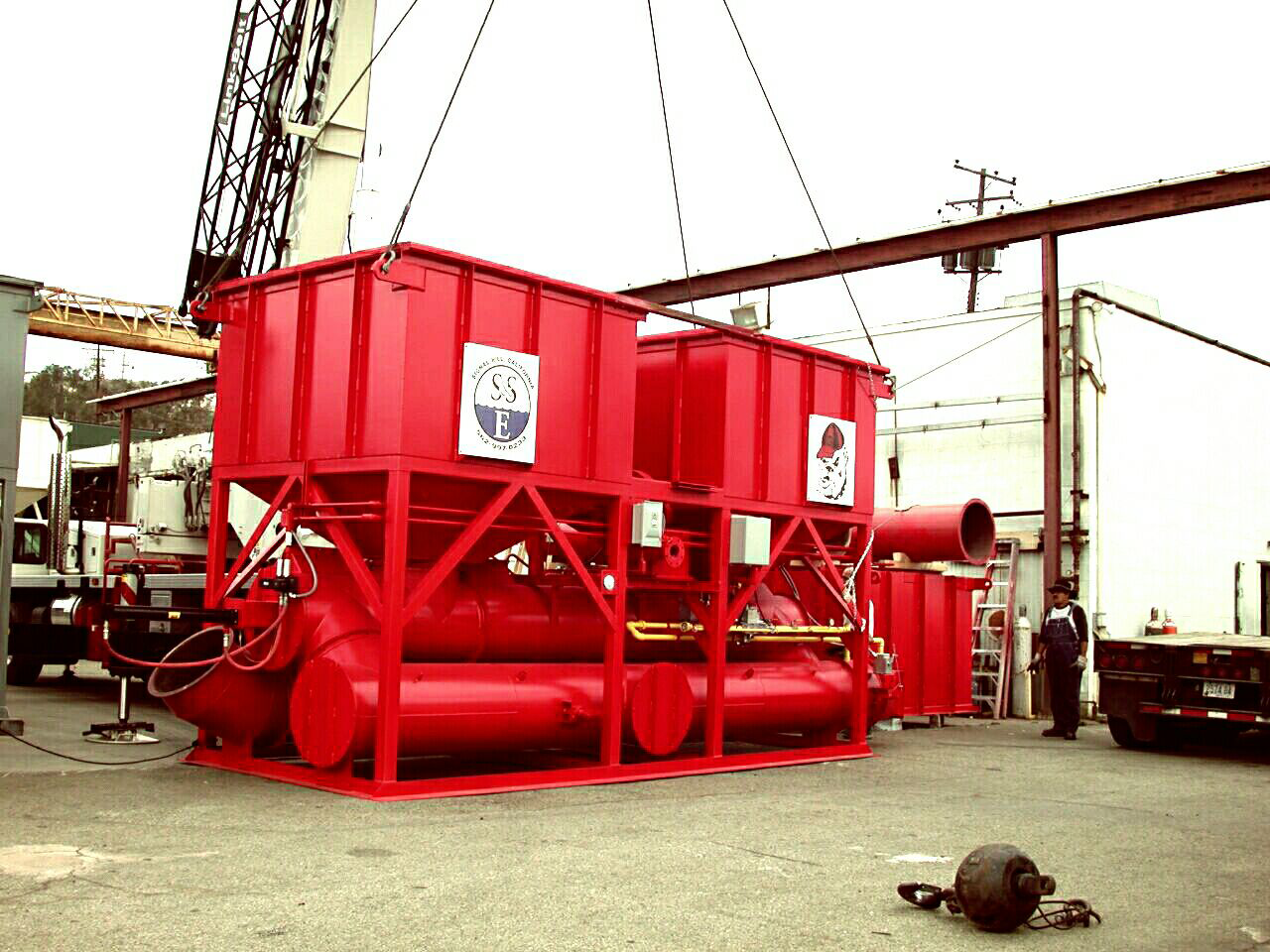
Ensuring Compliance: Safety Protocols Around Industrial Flares
September 8, 2025 5:17 amUnderstanding Industrial Flares: An Overview
Industrial flares are essential safety devices used at refineries, chemical plants, and various industrial facilities to burn off excess gases. Safety protocols around industrial flares are crucial in preventing accidents and ensuring the well-being of workers and nearby communities. These flares are designed to efficiently combust volatile organic compounds (VOCs) and other hazardous materials that could otherwise pose significant risks.
The primary function of an industrial flare is to control and mitigate pressure within processing units by safely burning off gases during normal operations and emergency situations. By doing so, industrial flares play a crucial role in preventing overpressure conditions, which can lead to dangerous explosions and fires.
The Vital Role of Industrial Flares in Ensuring Safety
Industrial flares serve as the last line of defense against catastrophic failures in industrial settings. They are engineered to handle a wide range of gases and vapors, converting potentially harmful emissions into less hazardous substances. This ensures that both the environment and the public remain protected from exposure to toxic materials.
Implementing robust safety protocols around industrial flares is vital in maintaining the integrity and reliability of these systems. Regular maintenance, proper training, and adherence to established guidelines are essential in ensuring that flares operate effectively and safely.
Significance of Implementing Safety Protocols Around Industrial Flares
Safety protocols around industrial flares encompass a wide array of procedures and best practices, all designed to minimize risks associated with the operation of these critical systems. By adhering to these protocols, we can significantly reduce the likelihood of accidents and enhance overall safety.
Effective safety protocols include regular inspections, thorough training programs for personnel, and stringent operational guidelines. These measures help ensure that industrial flares function as intended, protecting both human lives and the environment.
Moreover, implementing these protocols fosters a culture of safety within the organization. It emphasizes the importance of vigilance and preparedness, ultimately leading to a more secure and efficient workplace.
Key Safety Protocols around industrial flares: A Detailed Look
Ensuring safety around industrial flares involves adhering to a set of well-established protocols designed to mitigate risks and prevent accidents. These safety protocols are essential in maintaining a secure working environment and protecting both personnel and equipment.
One fundamental protocol is maintaining a safe distance from the flare stack. Workers must be aware of the designated safety zones around flares, and always use proper personal protective equipment (PPE). Regular inspections and maintenance of the flare systems are also pivotal. Scheduled checks ensure that equipment is functioning correctly and helps identify potential issues before they evolve into significant problems.
Moreover, implementing robust emergency response plans is crucial. These plans should be comprehensive, detailing specific actions to be taken during flare-up events, equipment malfunctions, or other emergencies. Conducting regular drills can reinforce these protocols, ensuring that all personnel are well-prepared to respond effectively in real-world scenarios.
The Role of Regulatory Bodies in Ensuring Compliance with Safety Protocols
Regulatory bodies play a critical role in ensuring compliance with safety protocols around industrial flares. Agencies such as the Occupational Safety and Health Administration (OSHA) and the Environmental Protection Agency (EPA) establish standards and guidelines that facilities must follow. These guidelines encompass various aspects of flare operation, including emission limits, safe operating practices, and maintenance requirements.
Compliance with these regulations is not merely a legal obligation but a fundamental component of operational safety. Regular audits and inspections by regulatory bodies ensure that facilities adhere to these standards. Non-compliance can result in severe penalties, including fines and operational shutdowns, emphasizing the importance of staying within regulatory frameworks.
Case Studies: Benefits of Proper Application of Safety Protocols Around Industrial Flares
Examining case studies where safety protocols around industrial flares have been effectively implemented can provide valuable insights into their benefits. One notable example is a major petrochemical plant that underwent a comprehensive safety protocol overhaul. By adopting stringent safety measures and enhancing employee training programs, the plant significantly reduced incidents related to flare operations.
- Enhanced worker safety and reduction in injuries
- Improved compliance with regulatory standards
- Minimized environmental impact and emissions
- Cost savings from reduced downtime and fewer accidents
- Increased operational efficiency and reliability
These benefits underscore the importance of diligently applying safety protocols. Through continuous improvement and rigorous adherence, facilities can achieve a safer, more efficient, and legally compliant operational environment.
In conclusion, integrated safety measures, regular maintenance, and adherence to regulatory requirements form the cornerstone of safe flare operations. Every individual within an organization plays a role in ensuring these protocols are followed, ultimately safeguarding both people and the environment.
Did you know that failures in industrial flare systems can lead to catastrophic events, but strict safety protocols can prevent 85% of these incidents?
Industrial flares act as a safety valve for plant operations by burning off excess gases, thus preventing potential overpressure and explosions. Adhering to safety protocols not only protects personnel and the environment but also avoids costly downtime and equipment damage.
Consequences of Non-Adherence to Safety Protocols Around Industrial Flares
When safety protocols around industrial flares are disregarded, the repercussions can be severe. Ignoring these essential guidelines exposes both personnel and equipment to substantial risks, thereby significantly increasing the likelihood of accidents. These incidents not only endanger lives but also result in costly damages and legal ramifications. Poor adherence to safety protocols can lead to catastrophic failures, culminating in fires, explosions, or toxic releases that can lead to long-term environmental harm. It is, therefore, imperative to maintain a steadfast commitment to all prescribed safety measures.
Ways to Enhance Compliance and Safety Practices
Enhancing compliance with safety protocols around industrial flares requires a multi-faceted approach. First, creating a culture of safety within the organization is crucial. This can be achieved through regular training sessions, workshops, and informative briefings that emphasize the importance of adhering to safety guidelines. Secondly, leveraging advanced monitoring technologies can provide real-time data to ensure all systems are operating within safe parameters. Regular audits and inspections are also vital; these procedures can identify potential risks before they escalate into severe issues. Finally, fostering open communication channels ensures that all employees feel empowered to report safety concerns without fear of reprisal.
Looking Ahead: The Future of Safety Protocols for Industrial Flares
The future of safety protocols for industrial flares is likely to be shaped by advancements in technology and increased regulatory scrutiny. Innovations such as automated safety systems, AI-driven predictive analytics, and enhanced real-time monitoring tools are poised to revolutionize how we maintain industrial flare safety. Moreover, regulatory bodies are continually updating standards and guidelines to reflect new research and technological capabilities. By staying ahead of these changes and committing to continuous improvement, we can ensure a safer operational environment. For further insights, our case studies illustrate the tangible benefits of consistently applying robust safety protocols.
FAQ
What are the risks of not adhering to safety guidelines regarding flare systems?
Non-compliance with safety regulations for flare systems can lead to grave consequences, including life-threatening accidents, expensive damages to equipment, and serious legal consequences. Moreover, there is an elevated risk of fires, explosions, or hazardous substance releases that can have detrimental environmental impacts. Therefore, strict adherence to safety measures is imperative for risk reduction.
How can an organization enhance its adherence to flare safety practices?
To improve adherence to vital flare safety practices, organizations can foster a safety-first culture, prioritize regular training and awareness programs, and implement advanced monitoring technologies for better oversight. Furthermore, conducting routine audits, inspections, and encouraging open communication about safety concerns are integral strategies that enhance compliance and overall safety.
What role do regulatory bodies play in flare safety?
Regulatory bodies are essential in establishing and enforcing standards that govern safe operation of flare systems. They provide a regulatory framework, conduct periodic compliance checks, and have the authority to impose penalties for non-compliance. As such, our ongoing collaboration with these agencies ensures we are at the forefront of safety practices.
What are some future advancements expected in flare safety protocols?
In the future, flare safety protocols are likely to be advanced by technological innovations, including automated systems, artificial intelligence, and more sophisticated monitoring tools. Furthermore, regulations are anticipated to evolve continuously, keeping pace with new developments and research findings. By embracing these advancements, we can anticipate even more effective mechanisms for maintaining safety.
How do case studies benefit the application of safety protocols?
Case studies provide valuable insights into the practical benefits of stringent safety protocols in real-world scenarios. By analyzing these examples, we can learn from past experiences, recognize the rewards of diligent safety practices, and motivate all stakeholders to prioritize safety. Consequently, they serve as both educational resources and testimonies to the effectiveness of proper safety measures.
Categorised in: Blog

